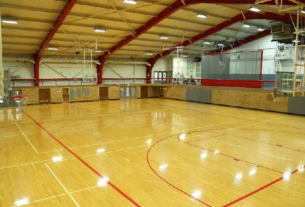Altitude training rooms are an excellent choice for athletes who need a competitive edge. The workouts in altitude training rooms simulate conditions that occur at altitudes of up to 15,000 feet. Athletes often feel better and perform better in high-altitude workouts. Aharon, owner of the Well-fit in the West Loop, created a unique workout room for athletes that replicates the environment at high altitudes.
Hypoxic training chambers
Hypoxic training chambers are designed to simulate the effects of high altitude on human beings. These chambers are commonly used by pilots and crew members. They work by isolating nitrogen from the air and simulating tens of thousands of feet in altitude. When the air pressure is too high, the body’s oxygen levels drop below normal. Aside from preventing the symptoms of hypoxia, hypoxic chambers also improve performance.
Physiological adaptations to hypoxia are well documented. While they result in short-term negative effects that require reduced training loads, they also have the potential to improve performance in altitude-specific competitions. The physiological adaptations may occur as early as three days after the training session.
A hypoxic training chamber can be as small as a bed tent or a large multi-purpose environment. The equipment used in these chambers senses ambient conditions to distort the oxygen profile. This distorts the natural environment and fools the body into thinking that it is at an altitude.
A similar design has been used in a study by the Australian Institute of Sport. Researchers used artificial LHTL to simulate altitude and observed an increase in Hb mass and improved exercise economy in athletes. The changes were not strongly correlated, however, with the results of multiple research groups.
Hypoxic sleeping chambers
The hypoxic sleeping chambers in altitude training room vendors allow athletes to simulate living high in an environment that is not available in their home. The chambers are set up so that you sleep for six hours at sea level and then gradually increase the altitude by about a thousand feet each night. The effect of altitude training on the body is that it is able to produce more red blood cells and transport more oxygen to the muscles. This has numerous benefits for athletic performance, especially in the endurance arena.
Currently, there are several types of hypoxic sleeping chambers. One type consists of a small area that has a fan and a ventilation system to help regulate air pressure. Another type uses a generator that uses electrical energy to produce hypoxic air. Both types of hypoxic equipment are very popular with recreational athletes and have become popular in sports and fitness settings. While these systems may be similar to tents, some of them can be uncomfortable. To counteract the discomfort, people usually decrease the temperature of the room.
In addition to the physical benefits, hypoxic chambers also provide other benefits. These chambers can improve performance and maximize results during workouts. Additionally, hypoxic chambers can help your body adapt to high altitude environments. They also help your body process red blood cells more efficiently and carry waste away faster.
Hypoxic chambers are becoming more popular among athletes and are now becoming more accessible. As long as you choose the appropriate solution for your needs, hypoxic chambers can significantly improve your performance. However, there are some disadvantages and potential risks. It is important to choose a solution that is appropriate for your needs and your budget. So, it is imperative to choose an appropriate hypoxic chamber for your training needs.
A hypoxic chamber is safer than a normal one, because it is safer, more flexible, and cheaper to build. This kind of training room also simulates the effects of high altitude on the body. A hypoxic chamber is a great training tool for aviators.
When compared to air in the mountain, CO2 in altitude training room air contains as much as 0,03% CO2. It is therefore important to keep the CO2 levels in the training room low. Otherwise, hypoxia symptoms can intensify. In addition, breathing air with elevated CO2 levels will trigger hypercapnia symptoms.
While altitude training at high altitude is beneficial, it is not practical for many athletes. They do not have the time or resources to decamp to the high altitudes. This means that hypoxic chambers are the more convenient solution for these athletes. Another viable solution is the use of elevation training masks. These masks simulate high altitude air and make breathing harder, thereby increasing the intensity of the workouts.
Artificial altitude training chambers
An artificial altitude training chamber works by lowering the oxygen concentration in the air. This reduces the amount of oxygen in the blood and forces the body to adapt. Over the course of several months, the body becomes better at transporting oxygen throughout the body. As the body gets accustomed to a new environment, it becomes stronger and more efficient.
There are several types of artificial altitude training chambers. The chambers can be used for various studies and research. These chambers are used in the military to train pilots, crews, and others. The chambers can simulate the conditions of real air travel and test flight equipment. Another type is a chamber for rapid decompression. These chambers reach altitudes of up to 100,000 feet.
The effects of artificial altitude training on the body are controversial. However, some studies have demonstrated the benefits of simulated altitude training on athletes. It has also been shown to be effective in helping athletes lose weight. The decrease in barometric pressure helps athletes perform explosive power activities, such as long jumps. It can also help athletes improve their technical skills in power-related sports.
One study concluded that an increase in red blood cells may be a result of altitude training, but it wasn’t statistically significant. Another study suggested that the effectiveness of training was due to the increased intensity of training. It also increased the heart and respiration rates. This resulted in effects that lasted for more than 15 days even after the subjects returned to sea level. This study also concluded that the lower atmospheric pressure requires lower air pressure in the breathing system. Furthermore, the thoracic diaphragm must be lowered more than at low altitudes to breathe.
The Live High-Train Low model produces a performance improvement of up to 4% for elite athletes. However, it is not clear whether the Live High-Train Low model is effective for amateur athletes. A meta-analysis of altitude training shows that different types of altitude training produce different effects. Although the effects vary from one person to another, the Live High-Train Low model is a significant factor in improving the performance of athletes.
There is much debate about the mechanisms involved in altitude training. However, there are some general consensus conclusions. The first is that a decrease in PaO2 or arterial oxyhaemoglobin saturation is associated with better performance. Similarly, it is possible that altitude training may also boost the production of red blood cells, hemoglobin, and EPO.




